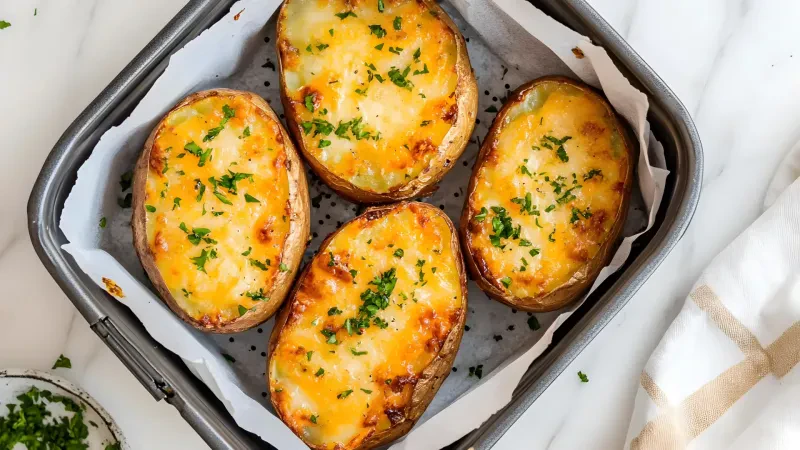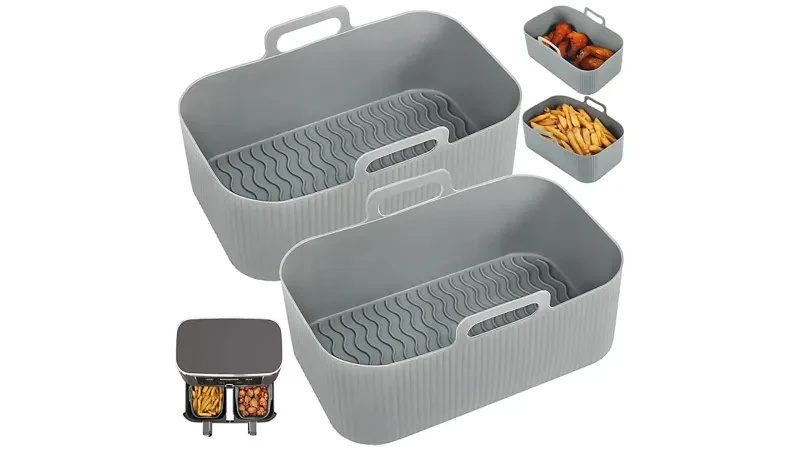Understanding the Energy Consumption of Air Fryers: Exploring Factors and Measurements
When it comes to kitchen appliances, air fryers have become incredibly popular due to their ability to mimic the effects of frying while using significantly less oil. However, one important aspect that often gets overlooked is the energy consumption of these modern cooking gadgets. In this article, we will dive into the various factors and measurements that help us understand the electricity usage of air fryers.
1. Wattage and Power Rating
The wattage of an air fryer is an essential factor in determining its energy consumption. Most air fryers typically have power ratings ranging from 800 to 1500 watts. The higher the wattage, the more power it consumes and the faster it cooks food. It is crucial to consider the wattage while purchasing an air fryer as the higher the wattage, the higher the electricity usage.
2. Cooking Temperature and Duration
The temperature and duration for which you use your air fryer also play a significant role in its energy consumption. Air fryers require high temperatures to cook food efficiently. Generally, air fryers cook at temperatures ranging from 175°C (350°F) to 205°C (400°F). Cooking at higher temperatures for shorter durations will consume less energy compared to cooking for longer durations at lower temperatures.
3. Food Quantity and Density
The amount and density of the food you place in your air fryer affect electricity usage. Air fryers are designed to circulate hot air around the food, ensuring even cooking. However, if you overcrowd the fryer basket or stack food on each other, it may hinder air circulation, increasing cooking time and energy consumption. Following the manufacturer's recommendations on food quantities is advisable to optimize energy efficiency.
4. Preheating Time
Preheating an air fryer is not always necessary, but it can impact energy usage. Preheating allows the air fryer to reach the desired cooking temperature, reducing cooking time quickly. However, leaving the air fryer on for an extended period without cooking can waste electricity. Consider the recipe requirements and only preheat when necessary.
5. Usage Frequency
Another factor to consider is how frequently you use your air fryer. If you are an avid air frying enthusiast and use it multiple times daily, your total energy consumption will naturally be higher than occasional users. Monitoring and managing the usage frequency can help optimize energy consumption.
6. Energy-Efficient Models
Finally, it is worth mentioning that some air fryer models have energy-saving features and technologies built into their designs. These models utilize advanced insulation, power modulation, and efficient air circulation systems to minimize electricity usage while delivering excellent cooking results. When purchasing an air fryer, look for energy-efficient models to reduce your overall energy consumption.
In conclusion, understanding the energy consumption of air fryers is key to more sustainable and efficient usage. By considering factors such as wattage, cooking temperature, food quantity, preheating time, and usage frequency, you can manage and optimize the electricity usage of your air fryer. Also, choosing energy-efficient models is an excellent way to reduce the environmental impact of your cooking habits. So, before you indulge in the crispy delights of air frying, consider the energy consumption and make informed decisions to enjoy guilt-free cooking.
Comparing Energy Efficiency: Air Fryers vs Traditional Cooking Methods
Regarding energy efficiency, many consumers are curious about how air fryers stack up against traditional cooking methods. Let's explore the energy usage of these cooking methods and see if air fryers truly live up to their reputation as an energy-saving alternative.
Air Fryers: A Greener Way to Cook?
Air fryers have gained popularity in recent years because they promise to create the crispy texture we all love in fried foods, with significantly less oil and a shorter cooking time. But are they really energy-efficient? Let's find out.
An air fryer operates using a technology that circulates superheated air around the food, cooking it evenly with minimal oil. This rapid air circulation allows for much faster cooking times than traditional methods such as deep frying, baking, or grilling.
Most air fryers have a wattage range of 800 to 1500 watts, depending on their size and power settings. On average, an air fryer consumes around 1 kWh (kilowatt-hour) of electricity for an hour of cooking. However, it's important to note that actual usage depends on the specific model, the temperature set, and the cooking time.
Traditional Cooking Methods: The Energy Guzzlers
In contrast to air fryers, traditional cooking methods often require preheating, longer cooking times, and substantial amounts of oil or fats for frying. Let's take a look at some common cooking methods and their corresponding energy consumption:
- Deep Frying: Deep frying involves immersing food in hot oil, which can be quite energy-intensive due to the large volume of oil needed to submerge the food. This method may require up to 3 kWh per hour, making it one of the least energy-efficient methods.
- Baking: Baking usually requires preheating the oven, increasing energy consumption. Depending on the oven's wattage and baking duration, it can consume around 2-3 kWh per hour.
- Grilling: Grilling is often viewed as a more energy-efficient option since it doesn't heat the kitchen as an oven does. However, grilling large quantities of food can still consume around 1.5-2 kWh per hour.
The Verdict: Air Fryers or Traditional Methods?
From an energy efficiency standpoint, air fryers definitely have an edge over traditional cooking methods. Their shorter cooking times, lower oil usage, and lower wattage contribute to their greener reputation. While air fryers consume electricity to operate, they are still a more efficient choice than other methods.
However, it's worth noting that the energy consumption of any cooking method can vary depending on factors such as the specific appliance, cooking temperature, duration, and the overall cooking technique used.
Ultimately, deciding between air fryers and traditional cooking methods goes beyond energy efficiency alone. Factors like taste preferences, convenience, and food variety also play significant roles in choosing the cooking method that best suits individual needs.
Tips for Reducing Energy Consumption and Maximizing Efficiency with Your Air Fryer
Air fryers have gained popularity in recent years thanks to their ability to provide a healthier way of cooking using less oil. However, it's important to know how much electricity these appliances consume and how to maximize their efficiency to reduce energy usage. Here, we provide valuable tips for saving energy using your air fryer.
1. Preheat Efficiently
Avoid preheating your air fryer for too long. Most models only need a couple of minutes to reach the desired temperature. Excessive preheating can consume unnecessary energy, so follow the manufacturer's recommended preheating time to achieve energy efficiency.
2. Use the Correct Size
Using an air fryer that is too big for your needs can lead to energy waste. Choose an appropriately sized air fryer based on your cooking portion sizes. Using a larger air fryer for small portions can result in longer cooking times and unnecessary energy consumption.
3. Arrange Food Properly
Properly arranging food inside the air fryer can contribute to better heat circulation and faster cooking. Avoid overcrowding the basket to allow hot air to flow evenly. This will reduce the cooking time and energy required to achieve the desired results.
4. Regular Cleaning is Essential
A clean air fryer performs better and consumes less energy. Regularly remove accumulated grease and food particles from the cooking basket, tray, and heating element. A clean air fryer ensures optimal performance and reduces the need for excessive cooking times, thereby saving energy.
5. Choose the Right Cooking Times and Temperatures
Understand the recommended cooking times and temperatures for different food items. Overcooking leads to unnecessary energy usage, while undercooking may require additional cooking time and energy. Knowing the optimal settings for different recipes will help you save energy in the long run.
6. Select Energy-Efficient Models
When purchasing an air fryer, opt for models with energy-saving features. Look for appliances with adjustable temperature controls, cooking time presets, and automatic shut-off functions. These features help you customize and regulate energy usage according to your needs.
7. Multi-functional Benefits
Consider the versatility of your air fryer. Many models offer additional functions such as baking, grilling, and toasting. Utilizing these features can reduce the need for multiple appliances, saving energy and valuable kitchen space.
8. Make Use of a Timer and Delay Start
Utilize the timer and delay start functions, especially when preparing recipes that require longer cooking times. This allows you to set the air fryer to start cooking at a specific time, ensuring your meal is ready when you need it while minimizing standby time and energy consumption.
By implementing these tips, you can reduce energy consumption and maximize the efficiency of your air fryer. Enjoy your delicious, guilt-free meals while being mindful of your health and the environment!


